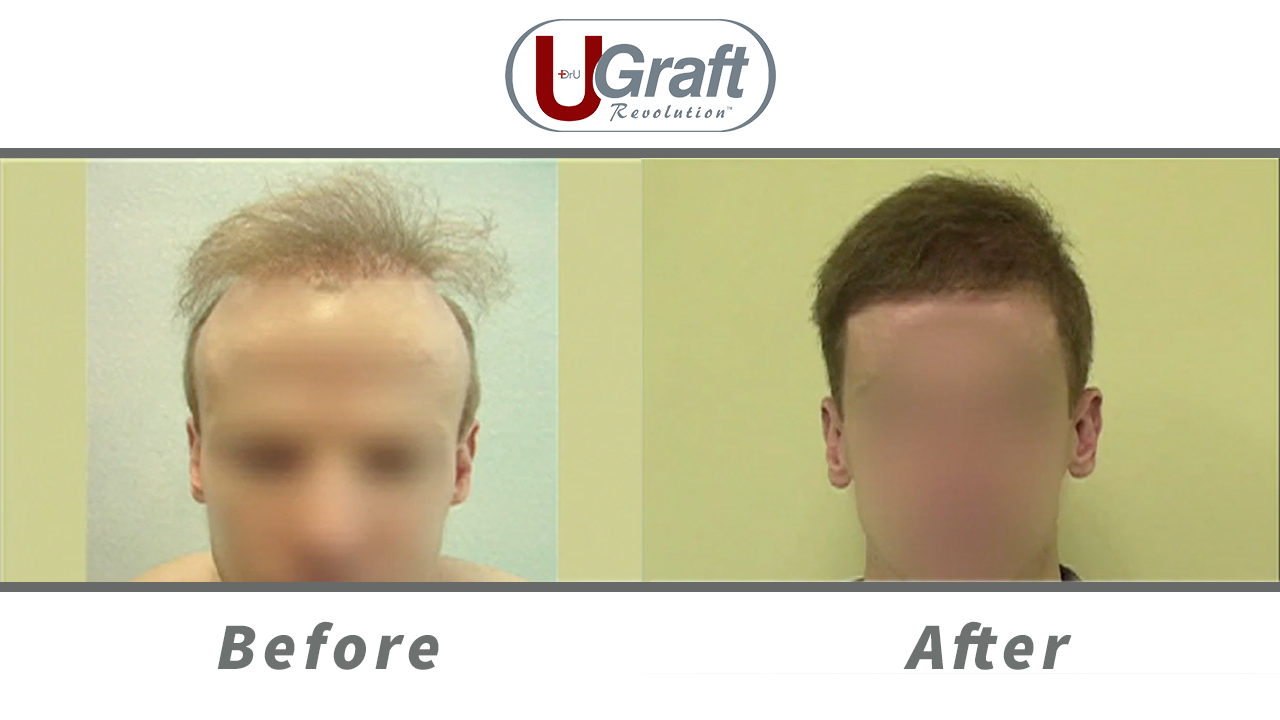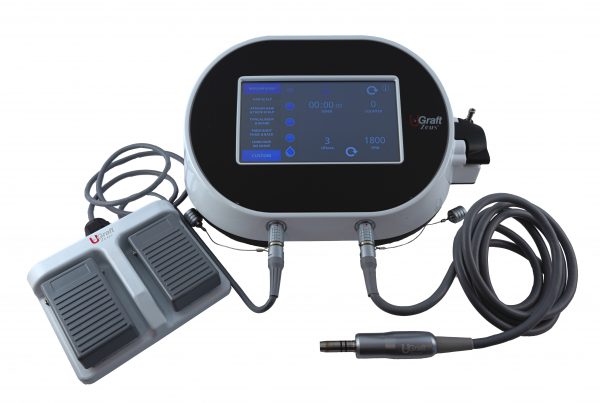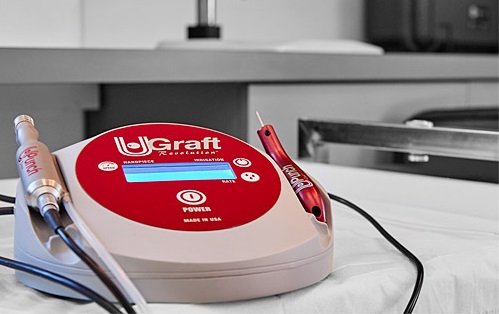Flap excisions for hairline restoration is highly invasive and considered an outdated technique for reversing the signs of hair loss in the frontal and mid-scalp regions. Creating and repositioning a large flap of scalp tissue to compensate for a receded hairline ultimately produces an awkward overall result. Many patients eventually seek help for restoring a normal and natural looking appearance. The patient in this case is, to date, the most involved repair scenario for this outdated procedure. Due to a depleted head donor area, as well as severe balding, this patient needed alternated sources to meet his graft count. Learn how Dr.UGraft ™ technology helped him achieve the coverage and natural-looking results he wanted.
Before Photos
The flap is usually removed from the temporal parietal areas or the temporal-occipital areas of the scalp. If additional coverage is needed due to continued hair loss, a second flap is created on the opposite side of the head and then anchored behind the first one.
Lines of demarcation and noticeably lowered density indicate that the individual will progress to a Norwood 7 level of baldness. Therefore, nape hairs will not likely survive in their new location. The effectiveness of the Shave Test was published in 2015 by the Aesthetic Surgery Journal.
There continue to be many patients who have undergone this surgery in previous years and now face regret. They are now left with an unnatural, linear hairline scar. Secondly, the hair on the flap points in the opposite direction as a result of the repositioning. And furthermore, they must endure permanent scalp disfigurement as a result of twisting the flap. While little can be done to reverse skin and tissue deformities, patients can achieve a more normal looking appearance by covering their hairline scar as well as depleted areas of the head.
The most feasible approach for concealing the hairline scar left by flap procedures is to insert new hair into the tissue.
Ultimately, the objective should also be to create the most natural-looking results possible. The choice of regular scalp hair is a poor match for the hairline edge due to its thickness. A natural looking hairline will have soft, thin hairs in the very front that gradually progresses to thicker hairs further back.
Using Nape Hair to Repair Flap Procedure
To mimic the detail of fine hairs in the hairline and temples, thinner nape hair is a far more preferable choice. Since standard FUE instruments are aptly suited to remove donor hair from the lower back and sides of the head, more specialized forms of instrumentation are recommended for the removal of nape hair follicles.
Dr. U estimates that grafts from the nape will survive long term in 75-80% of patients. He developed a method to reliably determine which individuals qualify as candidates for nape hair transplantation into the hairline. The FUE Shave Test is performed by shaving the nape area and noting: the distribution and density of hair any clear line of demarcation that denotes the remaining region of hair in severe baldness. In those who are destined to reach Norwood 7, nape hair follicles will miniaturize and will not survive long term in a hair transplant recipient area.
Superior Wound Healing Results
The Intelligent Punch™ (Dr.UPunch i ™) device is engineered to accommodate smaller diameter punch tips with customizable edges. This serves to vastly improve wound healing results on donor sites. The skin in these areas appear virtually untouched without noticeable signs of redness or bumps.
The Dr.UPunch i ™ creates wound cavities with a specific configuration. As the skin heals, the everted shape that is created will reduce the extraneous tissue formed around the lip that would otherwise contribute to the development of raised scars. The application of nape hair grafts to the front hairline allows former flap surgery patients to finally achieve a more natural looking hairline.
After Photos

The Dr.UGraft System allowed this patient to achieve coverage and repair his hair transplant scars from previous surgeries.*
Video: Hair Transplant Repair – Scalp Reduction and Flap Procedure Repair with Dr.UGraft™
The beauty of the Dr.UPunch i ™ technology is that it can be used for specialized extractions (e.g nape) or regular head hair. Therefore, surgeons are also able to use the device to correct the direction of hair growth to complete the process of restoring a normal and natural looking final result.
Frequently Asked Questions
What kind of donor hair should be used to repair flap and scalp reduction procedures?
Further Reading
Read more about linear scar free hair transplant procedures with Dr.UGraft™.




